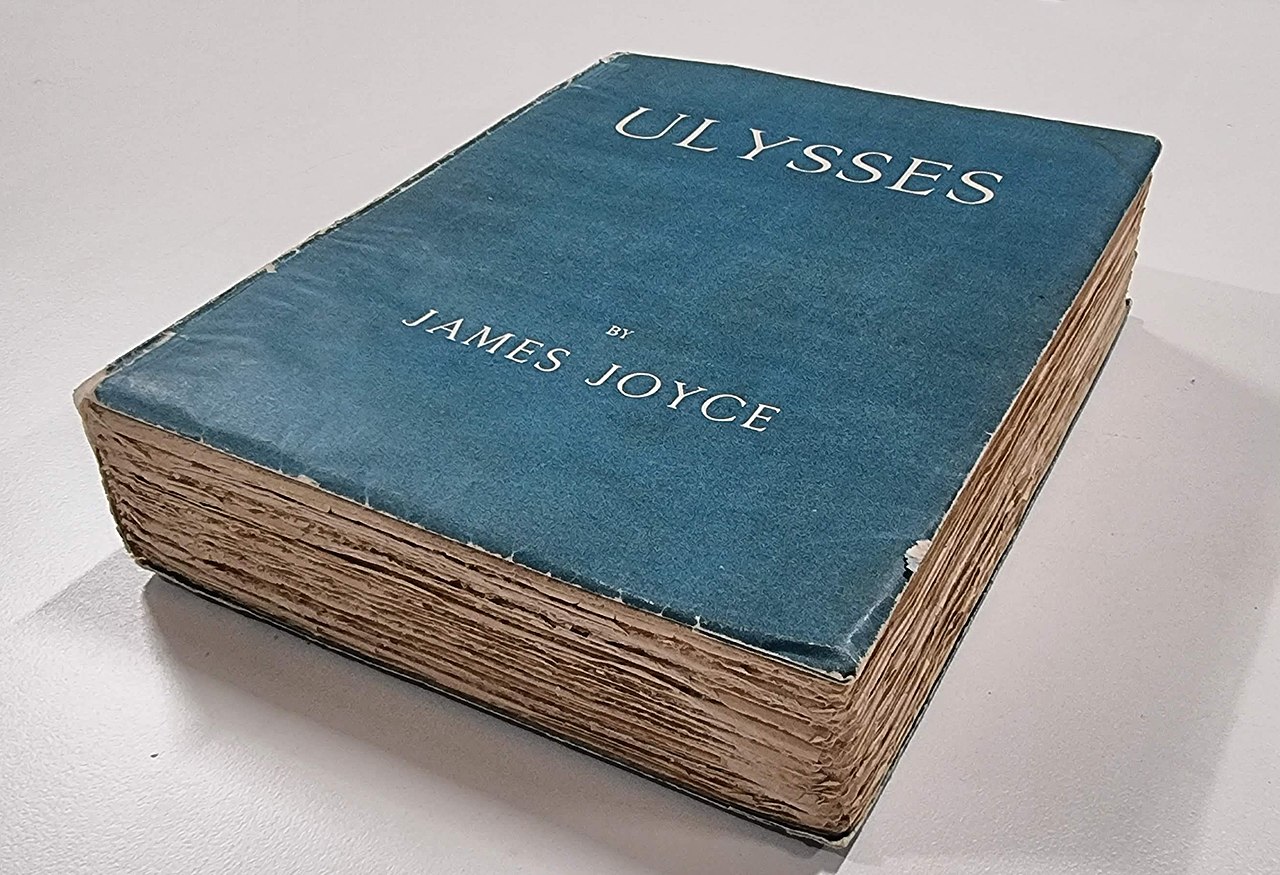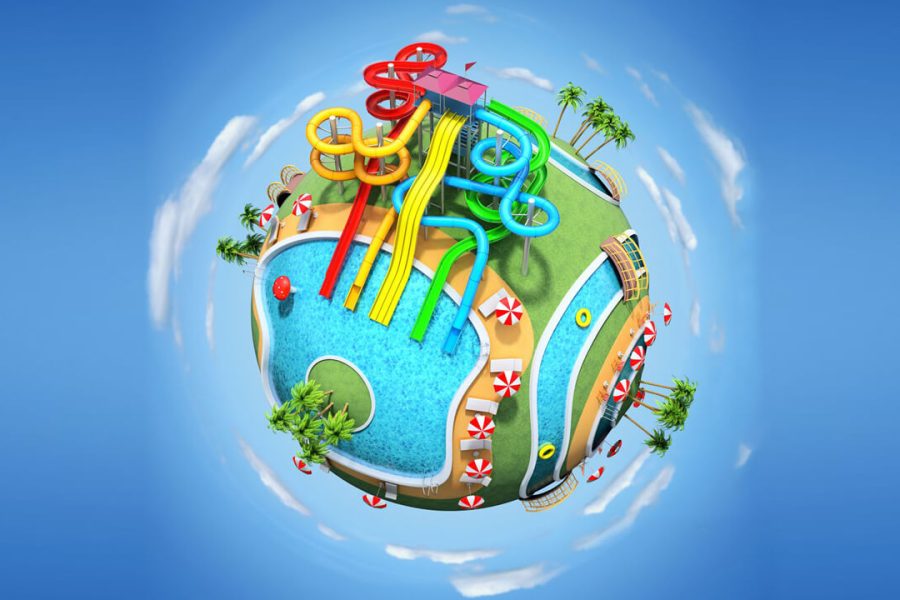Banning and burning books have existed since the earliest days of written text. It is not a new practice, nor has it died out with history. The earliest example of banned books occurred between 259 and 210 BC in China. The then Emperor Shi Huangdi is said to have killed 460 scholars to control the narrative of history in his time. In 212 BCE, he began burning all the books in his kingdom, leaving only one copy of each book for the Royal Library. Eventually, these too were destroyed.
Much has changed since then, but that doesn't mean books are invulnerable. Quite the contrary, in fact. One of the most famous examples of book banning and burning occurred in Nazi Germany, when Hitler ordered the destruction of all books, written by Jews, communists and others whom Hitler considered a threat to the regime and its ideology.
But of course, this is not the only time books have faced the threat of being banned or burned. In fact, even today, efforts are being made to remove books from schools for a variety of reasons, most of which are socio-political in nature. It remains to be seen how successful these efforts will be, but if there is one thing history has taught us on this issue, it is that usually when books are banned, there is simply no good reason to explain why. Such as…
10. Bridge to Terabithia
Children's book by Katherine Paterson " Bridge to Terabithia" has been criticized since its release in 1977. The beloved children's book follows Jess Aaron as he befriends his neighbor Leslie Burke. The two build an imaginary kingdom in the woods near their home.
The first case of a book being challenged occurred in In 1986 in Nebraska. The reason? Profanities like "Oh, my God" and the word "Jesus" are used as curse words. In 1990, a children's book was challenged in Burlington, Connecticut, for similar reasons, and for promoting a negative view of children's lives. Things really took off from there, and the book began to be challenged at least once a year.
In the period from 1992 to 2002 It has been challenged multiple times in Pennsylvania, Connecticut, Kansas, Maine, California, and Texas. While it was usually for profanity, it sometimes extended to crazier things, such as one case in Mechanicsburg, Pennsylvania, where it was accused of referencing witchcraft. Another Pennsylvania town, Pulaski, complained that the book showed disrespect for adults and a complex fantasy world that might confuse children.
Over time, the problem with Bridge to Terabithia has died down. However, from time to time the book comes back into the spotlight. This was especially true in 2007, when Disney released a film adaptation of the famous book.
9. Catch-22
Joseph Heller's World War II novel "Catch-22" published in 1961, is an undisputed classic. The novel follows Captain John Yossarian, a U.S. Air Force bombardier who doesn't want to die. However, there's no escape from service, evoking the call of wars throughout history.
Catch-22 became such a controversial book because of how much She received love and praise from the younger generation in 1961 and later. When the Vietnam War began, the book's themes and ideas became intertwined with anti-war sentiments. On the other side of the spectrum, people were outraged by the book's irreverent treatment of war as a topic.
Over time, the book has received more praise than when it debuted in the early 1960s, but it has also attracted negative attention. Despite the fact that on "Catch-22" there weren't many problems , like some other books that have been constantly attacked, it has still caused some high-profile fights. In In 1972 In Strongsville, Ohio, the book was removed from libraries because of its offensive language. It became a legal battle between students and teachers. Further attempts to ban it were made in 1974 in Dallas, Texas, and Snoqualmie, Washington, for its offensive depiction of women.
8. Purple color
Color Purple , released in 1982, continues to be subjected to deadly trials to this day. The most recent known attempt was in North Carolina in 2013, though it escaped a ban. But that’s far from the only time since the first attempt, at an Oakland, California, high school in 1984. The book has been the target of attacks, controversy, and bans for more than four decades.
Alice Walker's tragic story, written in letter form, takes place in rural Georgia as young Celia writes letters to God, documenting the traumas and triumphs of growing up. The book is an intense tale of sexism, racism, and poverty, with scenes that the average reader can relate to.
WITH 1984 to 2002 The book has been challenged in California, Wyoming, Virginia, Michigan, Tennessee, North Carolina, Connecticut, Florida, Texas, West Virginia, and Ohio. Many of the reasons range from depictions of sexual violence, homosexuality, incest, drug abuse, race relations, and negative portrayals of black men. Walker has several reacted bans, saying she is used to it. However, she believes that banning books means depriving teenagers of the opportunity to learn new things that may be useful to them when they become adults.
7. 451 degrees Fahrenheit
"Fahrenheit 451" Ray Bradbury — is a case filled with irony. The 1953 classic is set in a dystopian future where books are banned, and the irony doesn’t stop there. Technology is a big part of society in 2047, and firefighters start more fires than they put out, usually by confiscating and burning books. It follows Guy Montag, a firefighter who wonders why books were banned to begin with. The reason is eerily similar to where we are today. It’s about control of the narrative and reducing differences of opinion by creating consensus.
Topics "Fahrenheit 451" are quite simple. It is a story about technology and its ability to create more problems than it solves. The book is mostly about dissatisfaction and knowledge rather than ignorance; a civilization numbed and consumed by technology.
"Fahrenheit 451" began to be challenged at every turn under the guise of foul language and drug discussions. However, much more attention was paid to the fact that the book discusses restrictions freedom of speech and the idea of censorship For a country that promotes the First Amendment, banning books goes against the very idea of free speech. The book has been altered, censored, challenged, and outright banned in various states, counties, and schools for more than half a century. It remains banned in many places.
The book envisioned a distant future where information was kept secret and society was misled to protect them from the truth, allowing citizens to exist in ignorance. "Fahrenheit 451" was set in 2049, but here in 2022 we see examples of Bradbury's book coming to life.
6. The Catcher in the Rye
Everyone has at least heard of the scandalous book "The Catcher in the Rye" , written By J.D. Salinger 1961 to 1982 Salinger's infamous novel was the most heavily censored book in US schools and libraries.
"The Catcher in the Rye" follows Holden Caulfield as he struggles to grow up in mid-20th century New York City. The book is told from his bed in a mental hospital as Holden recounts his experiences of being expelled, clashing with other students, dropping out, living in Manhattan, struggling to grow up, and focusing on themes such as the loss of innocence. A big part of this novel is the idea that children are innocent and genuine, while adults are phonies. As you might imagine, this can cause some controversy. But ultimately "The Catcher in the Rye" — is a tragic story about the isolation and loneliness of teenagers as they become adults.
For the first time "The Catcher in the Rye" challenged in 1960. An 11th-grade teacher in Oklahoma was fired for teaching the book. Although she appealed the decision and got her job back, the book was banned because of the incident. This set off a frenzy of attempts to ban the 1951 novel. Between 1986 to 2000, After the fever ban was lifted, he was still attacked nine more times.
The book has been criticized for its use of profanity, drug and alcohol abuse, sexual references, and slander against God. Some less common reasons have also been cited, such as it being anti-white, violent, and immoral. The main problem was that it encouraged teenagers to rebel against their parents, schools, and the system. It's a long list of complaints that Salinger never bothered to address. To make matters worse, several shootings, including the infamous the murder of John Lennon , were are associated with criminals over the catcher in the rye .
5. The hate you give
"The Hate You Give" is one of the latest books to face intense attempts at rejection and banning. It follows Starr Carter’s journey as she rebels against police brutality against minorities in the United States after she witnesses her best friend being killed at the hands of the police. With race relations around the world continuing to deteriorate, it’s no surprise that with The Hate U Give are fought at every turn. Since its release in 2017, there has been a fierce battle in all 50 states to keep the book as far away from children as possible.
Author Angie Thomas was inspired by the Black Lives Matter movement. She addressed issues of police brutality, racism, classism and social inequality. In2018 In Katy, Texas, the book was pulled from the entire school district after several parents complained about Thomas's book. This caused an uproar among librarians and local parents, which eventually led to the book being returned to libraries, but only available to students with parental consent. The original ban was for its discussion of drug use, sexuality, and race.
IN 2019 In Springfield, Missouri, a high school challenged and eventually banned the book. In Mount Pleasant, South Carolina, the Fraternal Order of Police Lodge No. 3 of the Tri-County Schools sought to have the book removed from reading lists at local high schools. Many places wanted to remove the book from schools because of its racial themes. In the case of Police, it accused in "almost cultivating a distrust of the police, and we have to put an end to that."
In 2021 The Hate U Give was once again criticized for its implied anti-police message. It was after the summer of 2020, which saw a racial reckoning and the George Floyd protests, that the book regained popularity and reached the top spot on the list New York Times bestsellers , where she spent a total of more than 190 weeks.
4. The Hunger Games
In 2008, Suzanne Collins released her dystopian science fiction novel, The Hunger Games, and almost immediately it became a worldwide sensation. The book follows Katniss Everdeen, who takes her sister's place in a barbaric game called The Hunger Games, where the only way to win is to survive. Between book and film sales franchise "The Hunger Games" earned billions of dollars.
The book is not without controversy. The world Collins built divides the United States into 12 counties and the Capital. Each district essentially serves the Capital. As such, they are considered lower class citizens. The series has been the subject of many accusations, including anti-ethnic, Satanic, religious, anti-family, violence, offensive language, and sexuality. Some complaints about "The Hunger Games" does not stand up to scrutiny, nor does the idea of a religious subtext, since there is no religion in the books at all. Many have argued that "hope" counts as a religion, but this only makes the argument weaker and a little strange.
These are not the biggest problems found in the pages of this famous dystopian series. "The Hunger Games" accused of promoting anti-government sentiment because they explore the uprising in three books. The symbolic three-finger salute, which became a sign of resistance to tyranny, was used in real life, which did not help. In 2020 Students at a school in Thailand used this symbol in front of flagpoles. 2021 medics in Yangon, Myanmar, did the same to support Aung San Suu Kyi, the ousted civilian leader. These various themes have made the series the subject of countless attempts and successful bans around the world. Most of the problems was in 2010, 2011 and 2013.
3. Nineteen eighty four

Book by George Orwell "1984" has been the subject of intense international controversy with his book 50s, when Soviet Russia banned and burned book for its anti-communist views. At the opposite end of the spectrum, the book was banned in Jackson County, Florida , in 1981 for its pro-communist slant. But more recently, the book was criticized again in 2017 in Idaho for its excessive violence and sexual overtones.
So what about? series "Nineteen eight-four" ? Orwell's dystopian novel, published in 1949, follows Winston Smith (in what was then a vision of the future in 1984) in a world that has fallen victim to endless wars, omnipresent government surveillance, propaganda, and the whitewashing of history. Themes of political distrust, different political systems, and rebellion are major themes in " Nineteen eighty-four" .
Efforts to ban a book usually focus on the government themes, and many remove the pro-communist message when the book is anti-communist and anti-government. Themes of rebellion against the system have also been the basis for bans around the world by governments that don't like the idea of a rebellion like Stalin's in the 1950s.
2. Slaughterhouse-Five

In 1969, Kurt Vonnegut published "Slaughterhouse Five" , a satirical science fiction novel about Billy Pilgrim being pulled out of time and abducted by aliens. The book does a lot of exploring the horrors of World War II, using Pilgrim, a soldier, as a means to show how his life was sacrificed. When he is pulled out of time, it is as a result of his shell shock while he was a prisoner of war. It is then that he relives moments of his life.
Nothing is controversial from the start, but many of the themes in the book discuss free will and the cost of war, exploring Billy's relationship with time. It's an interesting book that makes us aware of our own mortality and how time doesn't give us free will because time can't be changed. So why was it banned?
"Slaughterhouse Five" — one of the most challenging books of the 20th century. It was the subject of a First Amendment case that reached the Supreme Court in Island Trees School District v. Pico in 1982 . Although the case went the way of the students, resulting in the ban being lifted, it has since been challenged. An earlier example prohibition "Slaughterhouse Five" happened in 1972 when The district judge called the book "depraved, immoral, psychotic, vulgar and anti-Christian."
Usually the problems are on "Slaughterhouse Five" associated with profanity or explicit sexual content, but some argue that anti-war sentiment ruffled feathers back in the '70s and '80s. Even after all these years, Vonnegut's classic runs into trouble every few years, repeating the same talking points of all those who banned it before.
1. Ulysses

"Ulysses" was first published as a serial in the American magazine Little Review. It was published as a book in 1922 and is now considered a masterpiece. Set in Dublin, James Joyce tells the story of three central characters in a parallel epic poem by Homer, Odyssey" .
As revered as the book became, it was not well received at first. The serialized parts were burned in the USA in 1918 , and the book was burned in Ireland and Canada in 1922. In England it was burned in 1923 and banned outright in 1929. violating the Comstock Act of 1873, which prohibited the distribution of obscene material through the U.S. mail. The case alleged that a serialized episode called " Nausicaa ", contains a moment where the main character pleasures himself, meaning it falls into the category of obscene. Although many dispute this due to Joyce's frequent use of metaphors, the New York Society for the Suppression of Vice won the case. The serialized version and the future book were effectively banned in the US.
The US lifted the ban on Ulysses V In 1934 when obscenity laws were relaxed. Looking back, we saw "Ulysses" as a bold experiment of its time. Controversial? Yes. Necessary? Absolutely. All the more reason why people shouldn't be shielded from books, but instead be able to embrace them, even if they're a little controversial.













Оставить Комментарий